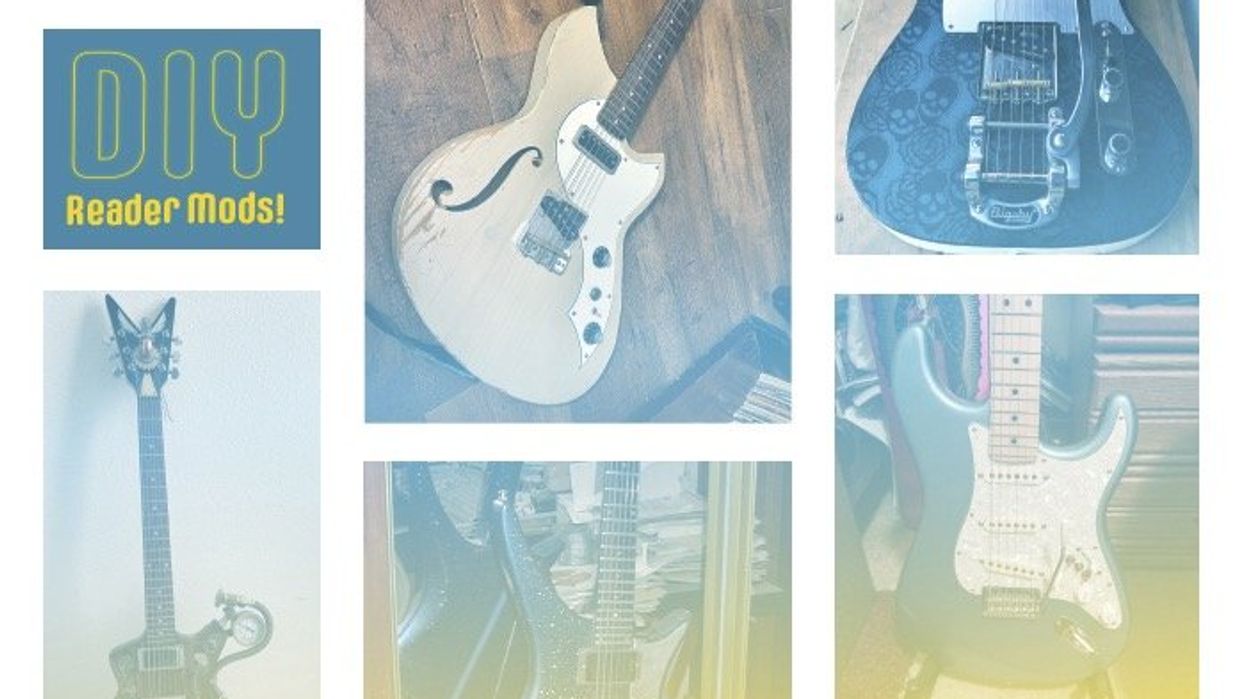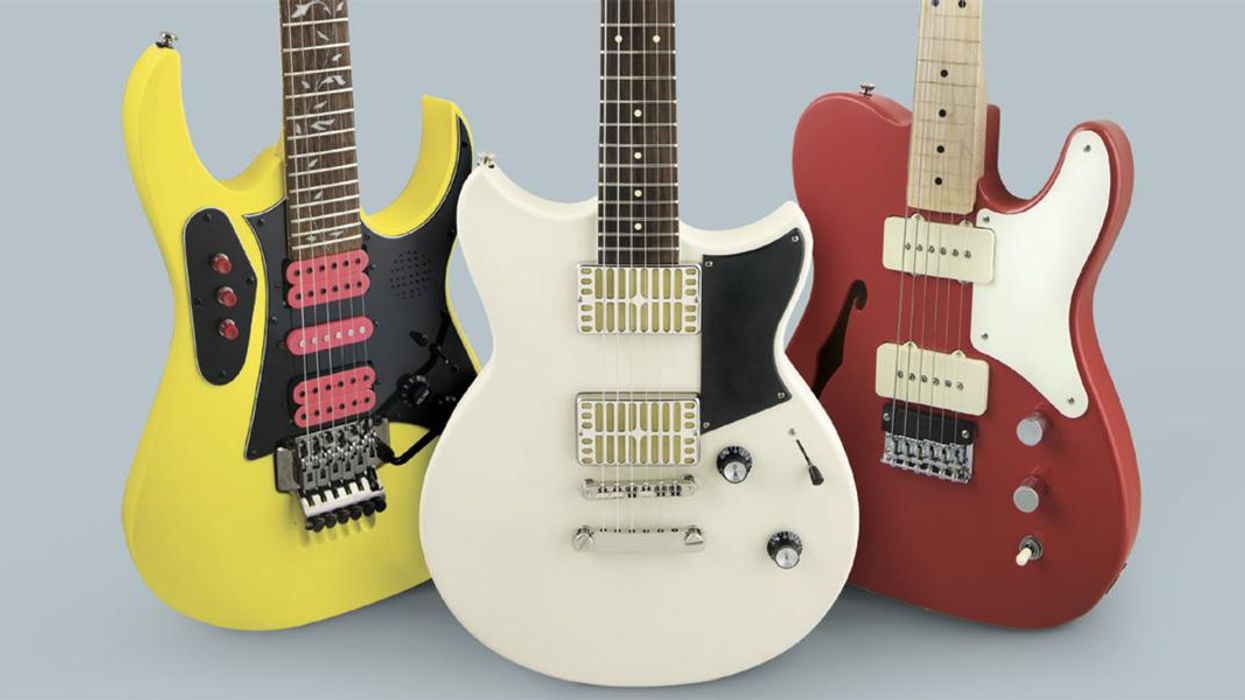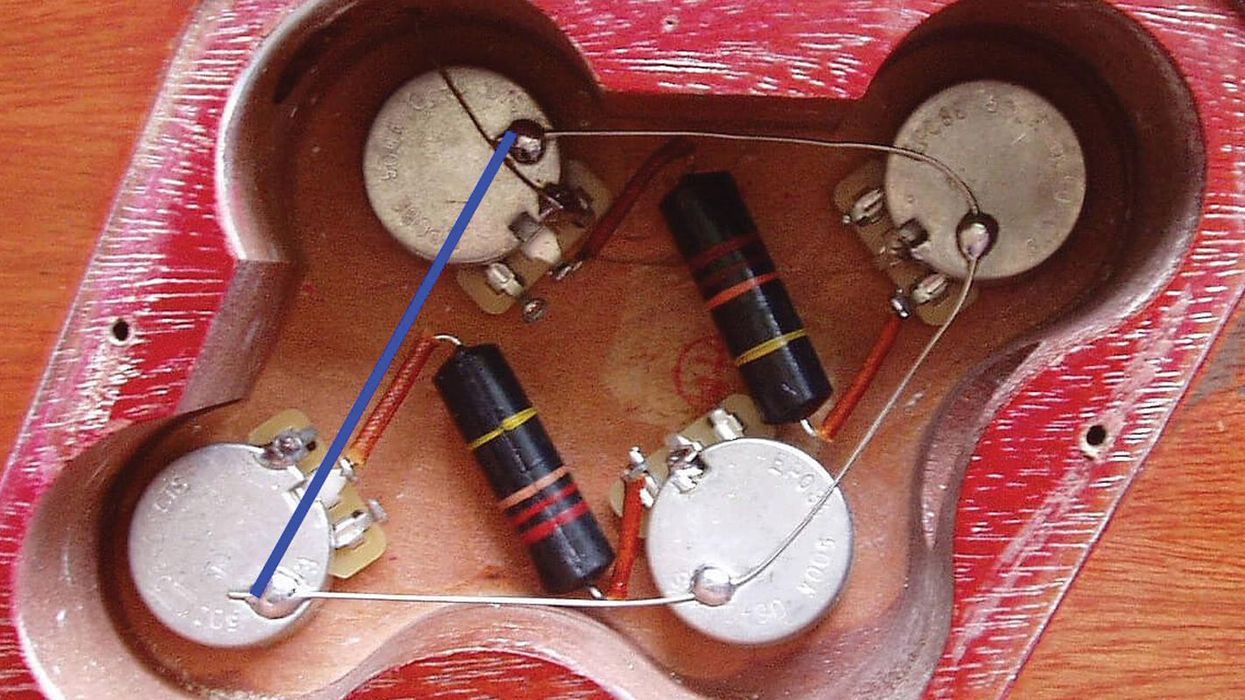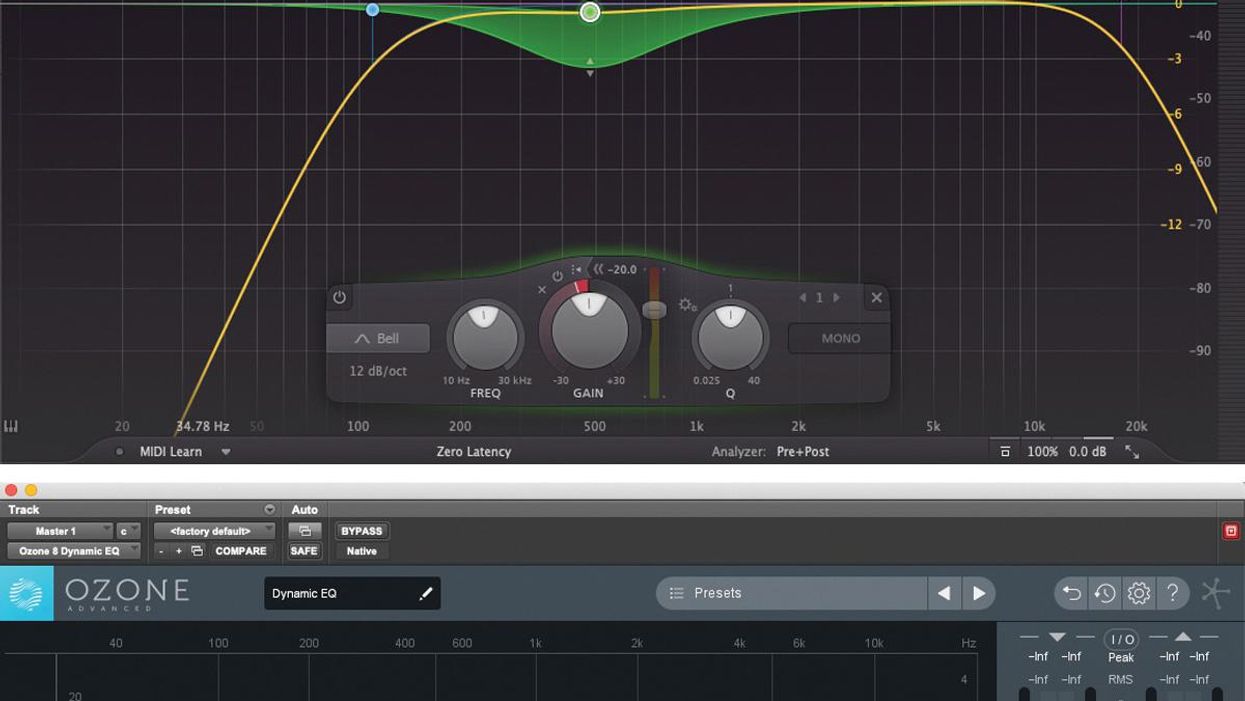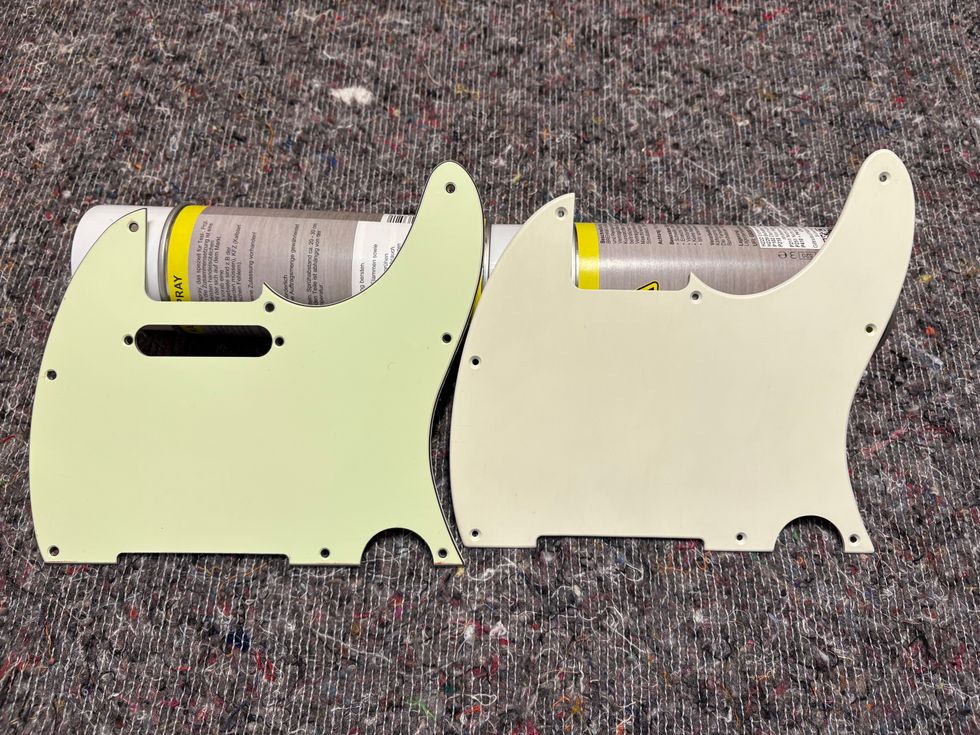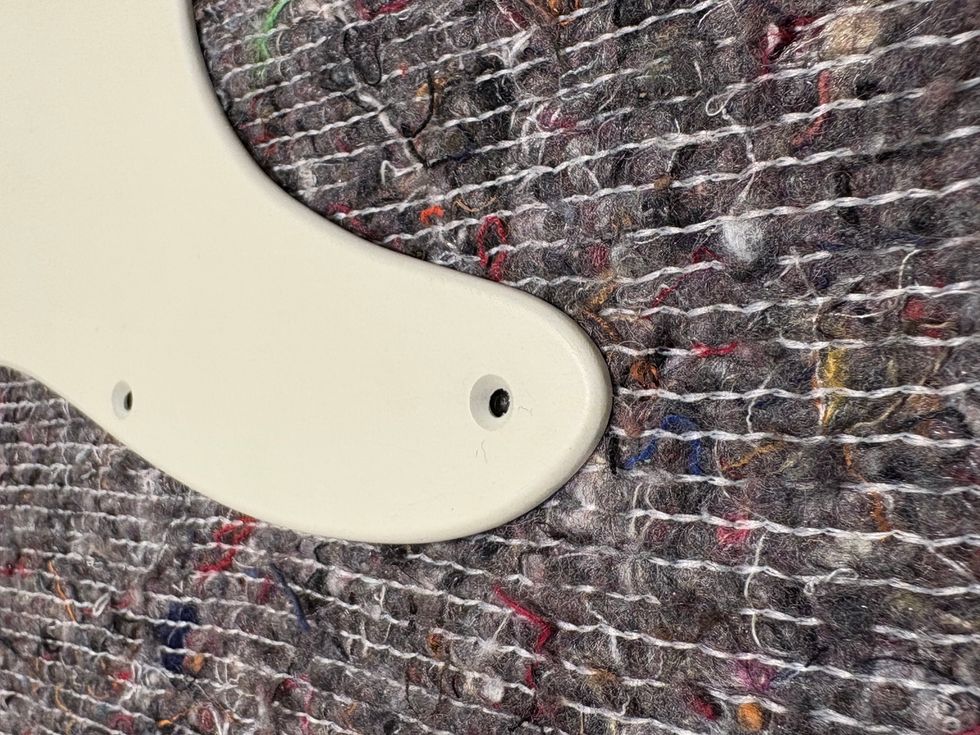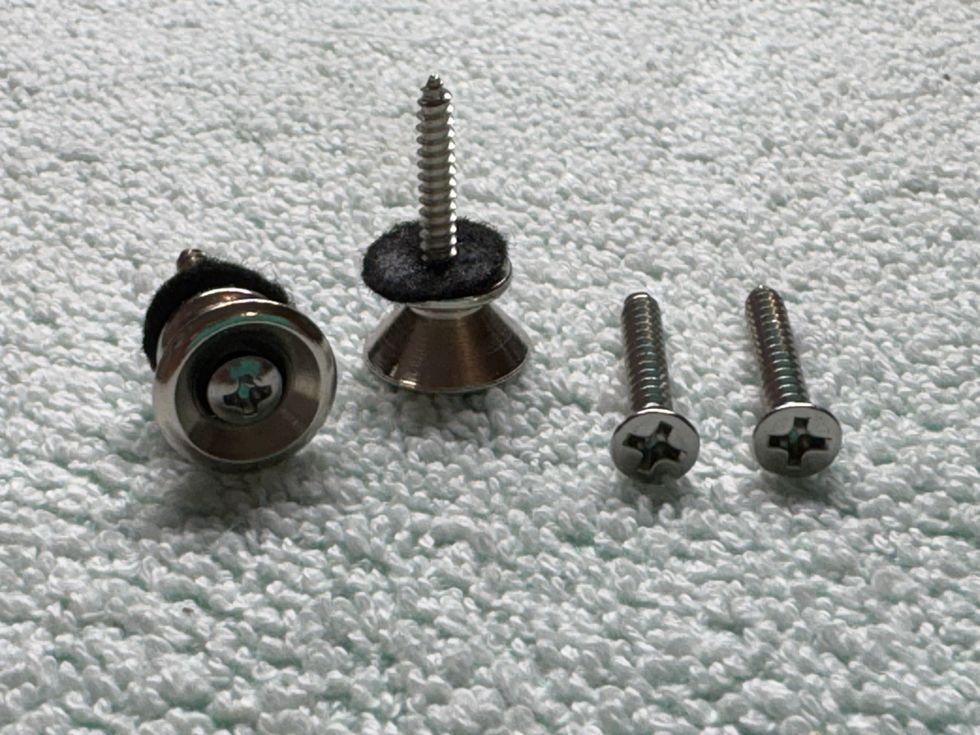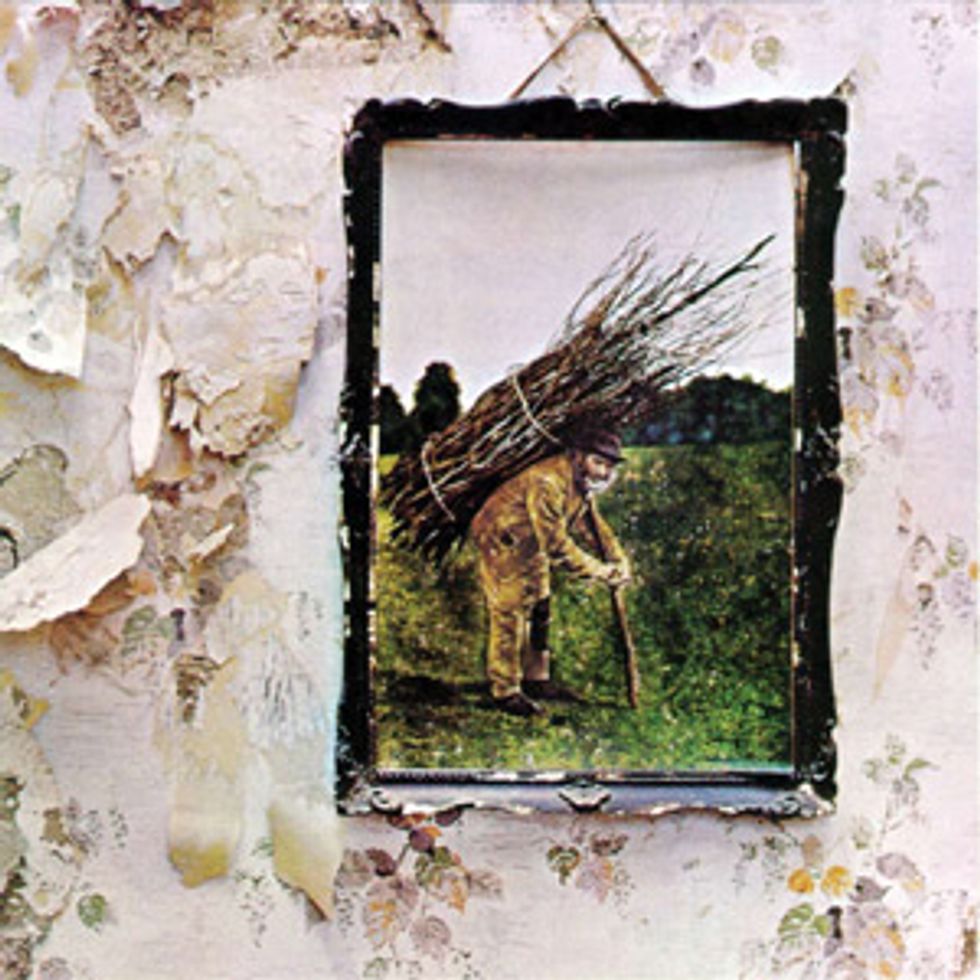
On “When the Levee Breaks” from Led Zeppelin IV, Jimmy Page’s guitar parts are panned left and right, and mixed quite dry with some deep flange. Conversely, the drums have a lot of deep room sound that’s exaggerated by heavy compression. This “dry/wet” combo gives the song a big, deep, dimensional feel.
“Insert quarter, avoid Klingons.”
That line—often repeated in the latest Steve
Jobs biography—is meant to indicate how
easy the instructions were to one of Jobs’
favorite Atari arcade games. The point is
powerful: Keeping things simple is often
the best way to get something done. This
philosophy can directly apply to guitar production—
especially in the studio.
In the course of cutting a large number of TV tracks, I often have to come up with a lot of material in a short amount of time. Too often, I’ve backed myself into a corner trying to play a part that might be overly difficult or complex for my own good. Sure, I’ve sometimes pushed myself to get it right, but more often I take a mental step backward and tell myself to keep it simple.
I have to continually remind myself of this lesson. When reading that line in the Jobs bio, I had to stop and think. It reinforced the notion that simple, well-designed things—be they iPods or guitar parts in a song—can be just what’s needed. Once I realize I’m stuck on a part or that something is not working, I’ll first clear my head. That means I’ll either step away or just have the engineer (or myself) roll the rhythm track. I’ll listen intently to the groove behind the song and focus on the kick, snare, and bass. Then I’ll mentally separate the chords and melodic structures from the actual rhythm. Finally, I’ll make sure nothing is interfering with the song’s “center,” be it the vocal melody or dialog (in the TV world). This process allows me to then approach the task again in a “simple is best” state of mind.
I’ll also ask myself, “What is the most basic guitar part this song really needs?” Once I’ve got an easy part flowing, I’ll then take it to the next level if necessary. Since I’m a big fan of double-tracking, I’ll sometimes split the parts up as well, playing a bass-heavy pass on the left, followed by a lighter, higher-position part on the right. Taking it a step further, I’ll try to simplify the guitar sound itself. That may mean stripping down any production elements, such as delays, reverbs, or effects. Remember, dry guitar parts will present themselves as sounding “forward” in a mix. Wetter parts will sit themselves “deeper.” That’s why I rarely use room mics when tracking guitar parts. I find that they often don’t get used in the final mix. Of course, there are times where a room mic can add nice depth to a part, but it has to be the right kind of track to fit the need. Usually, placing a few mics directly on the speaker is all that’s called for.
On this subject, I think of some mental notes I made when talking with engineer Tony Platt. Platt recorded (along with Mutt Lange) Angus and Malcolm Young’s guitar parts on the Back in Black album. He said the band was adamant that little to no effects be used during the mix process. Just pop that record on, and listen closely to the guitar production. Angus’ parts are right there in your face, yet he used nothing but an SG and some modified Marshall heads and cabs. There are little to no effects on any tracks, across the entire record. A classic indeed.
I often apply this “dry” technique when mixing guitar-heavy projects. By keeping the guitars up front, it lets me build a dimensional soundstage behind them. A great example of how effective that can be is to listen to something like “When the Levee Breaks” on Led Zeppelin IV. The drums have a lot of deep room sound on them that’s compressed quite hard. While they sit themselves back in overall sound, they also drive the whole song. Page’s guitar parts are panned harder left and right, and are quite dry verb-wise (with some deep flange). That’s especially true for the slide parts that permeate the song. This “dry/ wet” combo gives the song a big, deep, dimensional feel. Another classic!
Next time you get stuck when cutting a guitar part, step back for a minute. Think how you can simplify the idea to make it fit. Then think about how the guitar is presented in the mix. Consider making it as dry as possible by removing any effects. That will push the sound up front and make it leap out of the speakers. Then insert a quarter, and avoid those Klingons!



